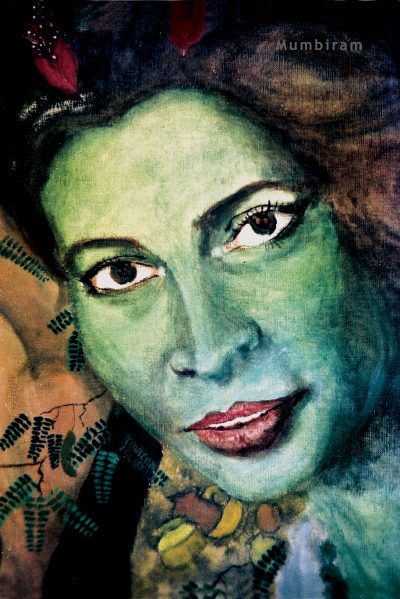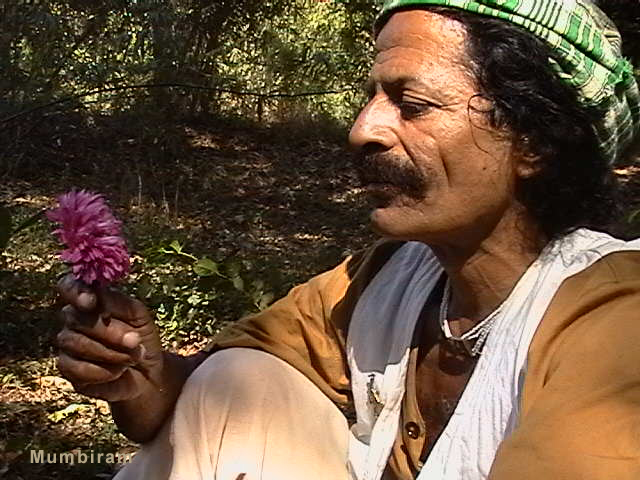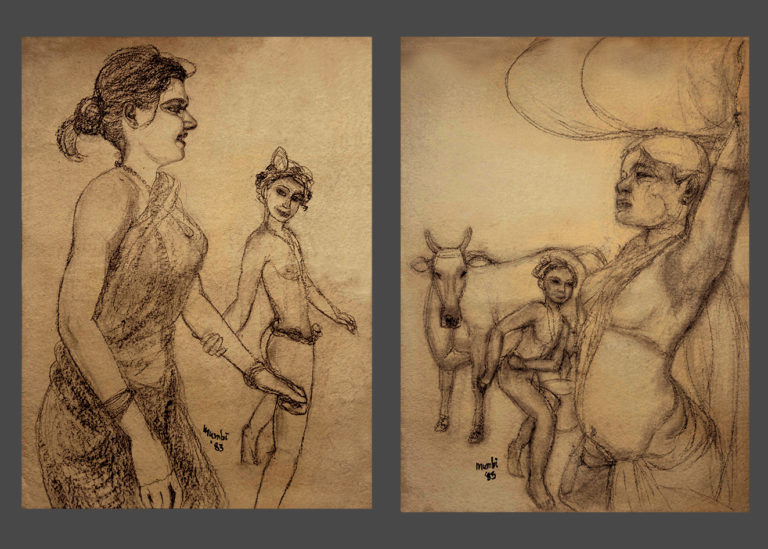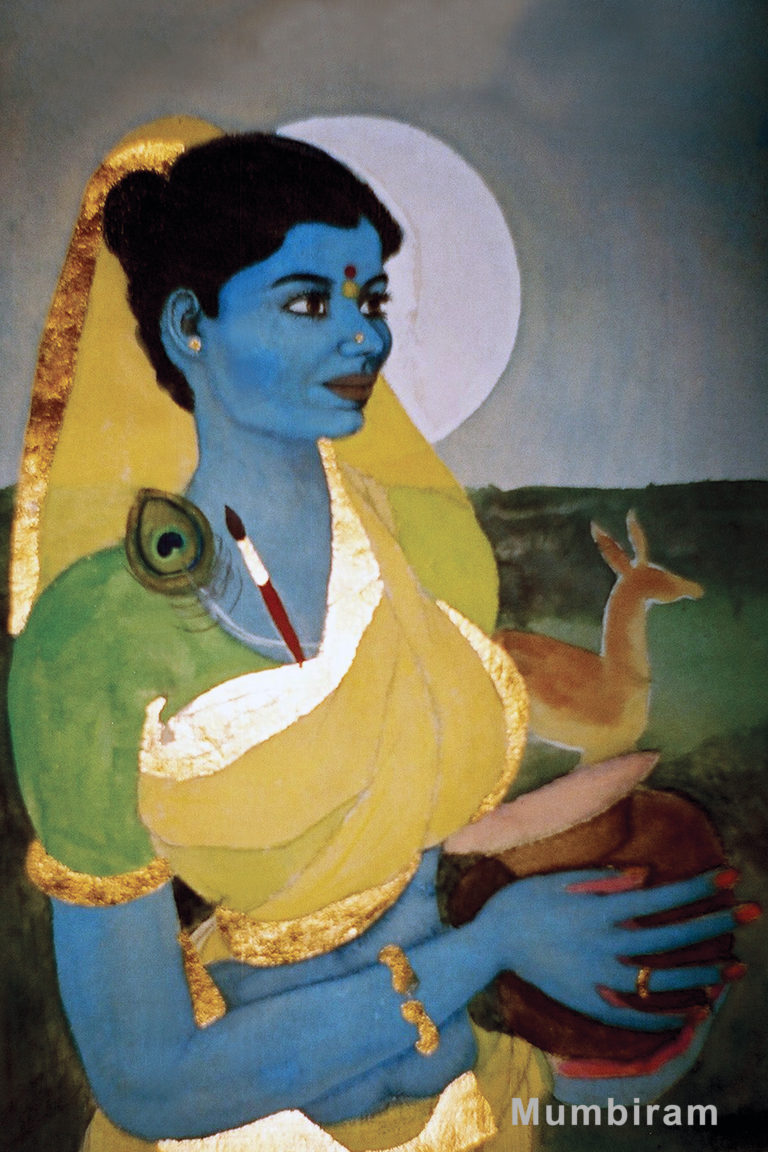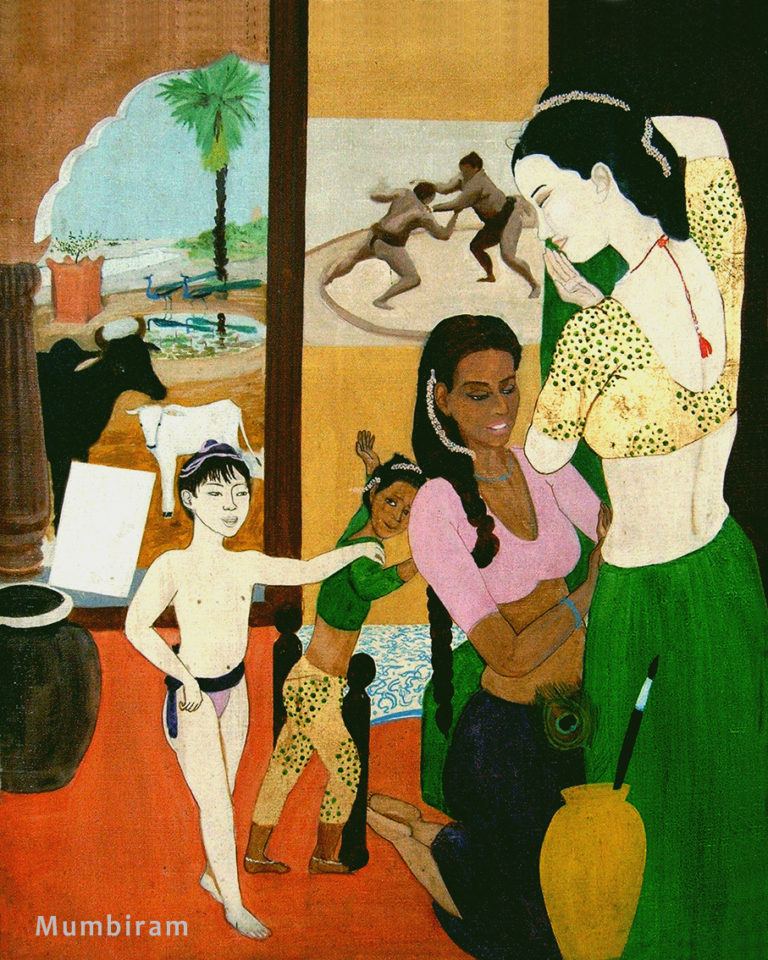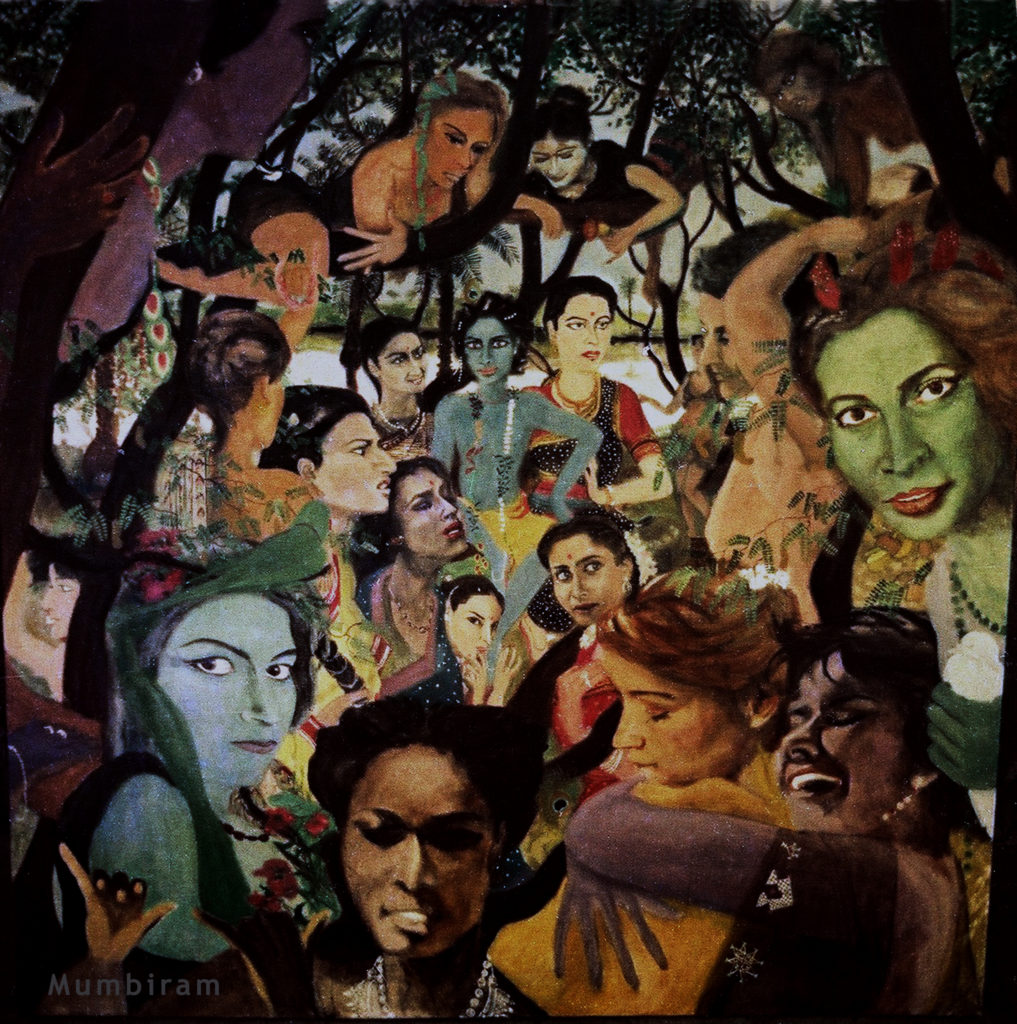
“Forest Women visit Krishna and the Gopis” is the flagship of Rasa Renaissance. It is unique for its subject matter as well as artistic virtuosity, treatment and perspective. The natural ease in rendering the variety of ecstatic moods and human types shows Mumbiram’s acutely evolved sense of portraiture. The space is created solely through juxtaposition of faces and their gazes. This is Mumbiram’s Personalism at its best.
In this tumultuous vision of an afternoon gathering by the riverside every one is seen engaged in a very unique activity. Each one of them is in a different mood. It’s ecstatic.
Some are trying to attract each other’s attention. Some are daydreaming. One is imitating playing a flute.
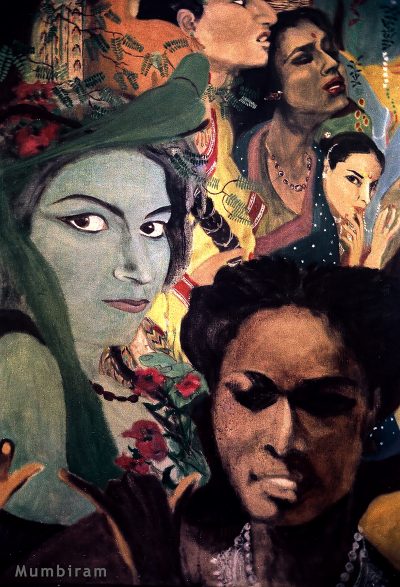
Look carefully, each one is dressed very differently and very creatively. Some are looking directly at us and some are totally unaware of the viewer. It is as if the painter was there. He was amongst them.
Some have flowers in their hair. Some are wearing garlands of forest flowers around their neck. Their hair is done in uniquely attractive arrangements. There are birds hiding in the confusion.
One of them has a dove in her hand. The vision is compelling.
We seem to be sharing the very intimate and personal emotional state of each one of the figures, even though they are part of a multicultural crowd.
This masterpiece celebrates the unique emotional essence of each individual. They are all together but very uniquely. You see the faces of people from all over the world. What is happening here ?
This flagship of Rasa Renaissance is loaded with spiritual and social nuances. One could think only those critics who are well-versed with the Rasa-Siddhanta can do justice to this masterpiece. Yet it can simply be appreciated as a masterpiece of Rasa Renaissance.
It transcends mere cultural variety and puts one on the sublime plane of the universal aesthetics of Rasa.
Mumbiram’s large canvas “Forest Women visit Krishna and the Gopis” is based on an enchanting Sanskrit verse of the Shrimad Bhagavatam, tenth Canto. Mumbiram’s interpretation is enchanting. He made his first rendering on this theme in 1975 in Seattle on the walls of an Indian Restaurant—Maharishi. The second was on a canvas that Mumbiram carried under his arm from Seattle to Denver in 1977. It should be with a Seventh Day Adventist Afro-American family. The one appearing here is the third one.
The adolescent Krishna is possessively surrounded by the Gopis who resemble well-known Mumbai actresses of the 80s. The Forest Women are attracted to Krishna but cannot go near Him.
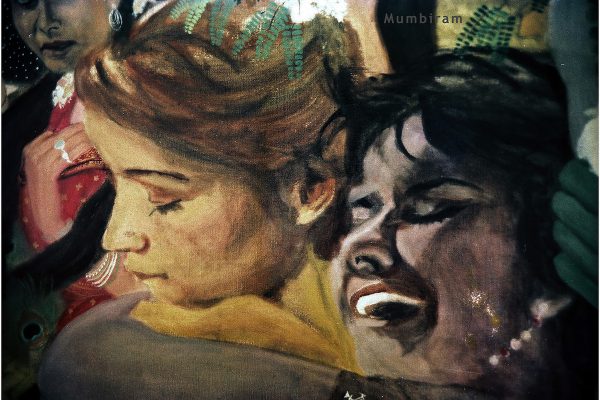
In their moods of ecstasy some are embracing each other.
